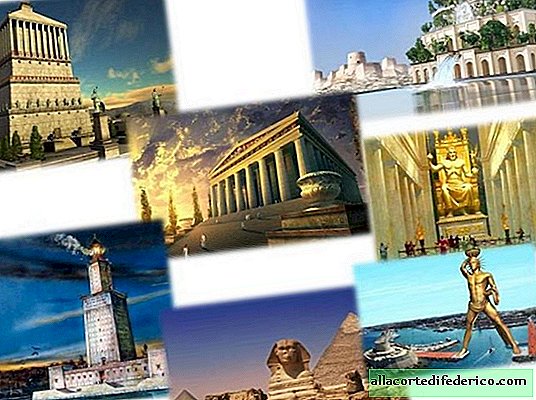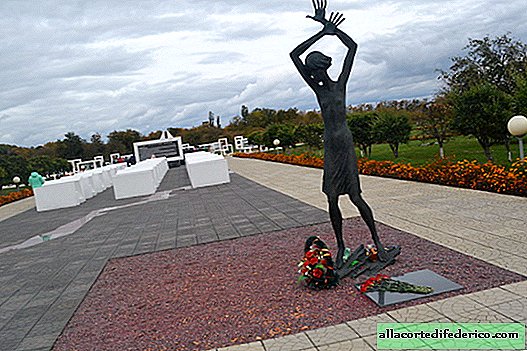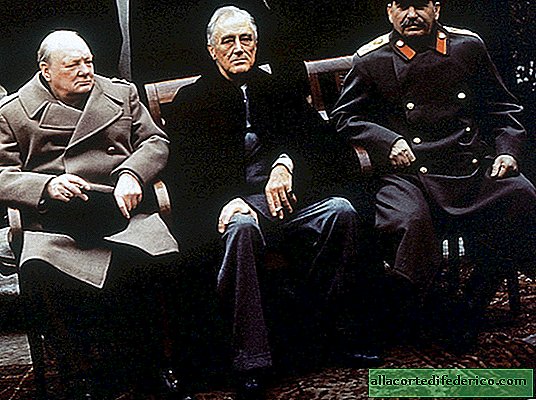The choice of contemporaries: which objects are included in the list of new seven wonders of the world
In the ancient world, as you know, there were seven wonders of the world. These included outstanding architectural structures of the time. The classical list included the following creations of the ancients: the Pyramid of Cheops, the Lighthouse of Alexandria, the statue of Zeus at Olympia, the mausoleum at Halicarnassus, the hanging gardens of Babylon, the temple of Artemis at Ephesus and the Colossus of Rhodes.

But time was merciless to architectural masterpieces: earthquakes, fires and military conflicts destroyed most of them. The only of the seven wonders of the world that have survived to this day are the Egyptian pyramids.

For this reason, people at all times sought to supplement the list with modern architectural objects, which, in their opinion, possessed outstanding parameters. Another attempt to choose the best works of architecture was made by the non-profit organization New Open World Corporation (NOWC), and Bernard Weber was the initiator of the vote. Those who wish could offer their object of world architecture and leave their vote for it through online voting or sending SMS.

We offer to see which structures are included in the list of new wonders of the world and evaluate the choice of contemporaries.
Petra City, Jordan

Petra is the ancient capital of the Nabatean kingdom. The city is located in the middle of the Jordanian desert and is known for its unique temples carved into the rocks. Currently, the city is uninhabited, but hundreds of thousands of tourists visit it annually.

Statue of Christ the Redeemer, Rio de Janeiro, Brazil

A statue of Jesus Christ with outstretched arms was erected on Mount Corcovado in Rio de Janeiro in 1931. The height of this grandiose monument is 38 meters. The statue of Christ is a visiting card of Brazil and is very popular with tourists.

Colosseum, Rome, Italy

The Coliseum, or Flavian Amphitheater, was built in the 70s of our era. It was a grand arena for performances and gladiatorial fights. But after the invasion of foreigners and the earthquake, the Colosseum began to collapse. Unfortunately, this process continues today.

Machu Picchu, Peru

Machu Picchu was built by the Inca civilization in the Andes, on the territory of modern Peru, presumably in the 15th century. By the time the Spaniards discovered it, the city was already uninhabited. Machu Picchu is the ruins of a grandiose complex consisting of palaces, residential quarters and ritual buildings.

Taj Mahal, Agra, India

Taj Mahal - a masterpiece of Muslim architecture, built during the Mughal dynasty in the middle of the XVII century. The complex serves as a mausoleum and mosque. The Taj Mahal is visited annually by more than 3 million tourists.

Great Wall of China

This grand defensive structure stretches over 8,000 kilometers in northern China. The construction of the Great Wall of China began in the III century BC and continued until the middle of the XVII century.

Chichen Itza, Mexico

The city of Chichen Itza was supposedly built in the VI century AD and was the cultural and political center of the Mayan civilization. The city was attacked and conquered by the warring tribes several times and has been uninhabited since the 12th century. Although its cultural significance as a place of pilgrimage, Chichen Itza retained several centuries after the inhabitants left it.

The material is copyrighted, when copying a link to an article or travelask.ru site is required

















